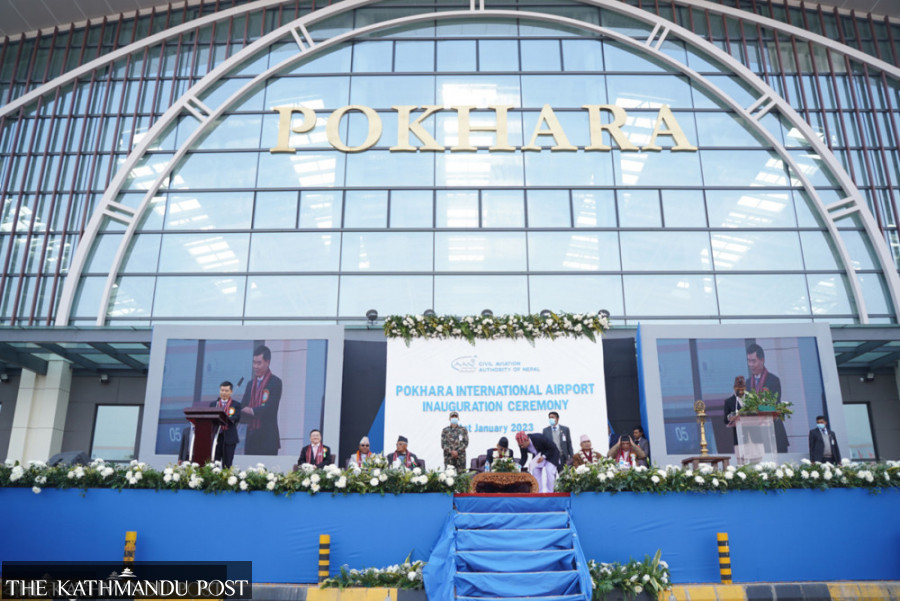Editorial
Come fly with me
Despite the chequered history, Pokhara international airport can be made a profitable undertaking.
As anyone who has ever taken out a sizable loan can attest, the obligation constantly niggles at your mind. Perhaps it’s a different matter if you take the loan on behalf of your country, especially a country characterised by lack of accountability and transparency in its financial dealings. Prime Minister Pushpa Kamal Dahal inaugurated Pokhara international airport on Sunday, built with a $215.96 million loan from China EXIM Bank. Of the total amount of credit, 25 percent will be interest-free while the interest on the rest has been fixed at 2 percent a year. The repayment period is 20 years, with a grace period of seven years when no interest will be charged. The process of bidding and awarding the airport contract had been steeped in controversy since 2009, when Dahal, during his first term as prime minister, gave the project his go-ahead. Due process was repeatedly violated. More than that, there seems to have been doubts over the project’s commercial viability from the start, as was also highlighted by the Office of the Auditor General.
The doubts are already being vindicated as no international airline has as yet been signed up to serve the new airport. The operation of domestic airlines alone will not be enough to generate enough revenue to repay the Chinese loan. It was built with Chinese tourists in mind, and there is no immediate prospect of them coming in large numbers as China is only just reopening after years of lockdown; and as Covid-19 cases in China shoot up, other countries are barring rather than welcoming Chinese tourists. The picture may not be so grim in the long term as China’s economic outlook slowly brightens. Yet, as the bitter experience of Gautam Buddha International Airport in Bhairahawa shows, foreign airlines will not fly in just because we decided to build another international airport. It is astonishing that a project built with foreign loans has started operating without a proper business plan.
That said, the project’s completion is a dream come true for the people and businesses of Pokhara who had been clamouring for an international airport since the early Seventies. Given the big tourist draw of the lake city, there is also no reason the airport cannot operate profitably—after paying back its loans—if it is run as a professional enterprise. This will entail offering incentives like free parking and ground handling services for international airlines for a certain period. Moreover, in order to control leakages and run the airport professionally, its operations can be handed over to the private sector, as nearly all international airports do.
Perhaps the biggest boost for the new international airport—as well as the one in Bhairahawa—would be to convince India to give Nepal additional air routes. That will be difficult with China now clubbing Pokhara airport under the BRI, which India has refused to join. But Nepal should not stop trying. Having taken up a big international obligation, the country cannot afford to let the new airport become a financial failure. For one, that will dent our confidence to tap into international resources for national development. More than that, the long-term goal should be to build self-sustaining projects rather than adding to the state’s burden by getting it to endlessly subsidise commercially iffy undertakings.




 5.39°C Kathmandu
5.39°C Kathmandu












%20(1).jpg&w=300&height=200)

